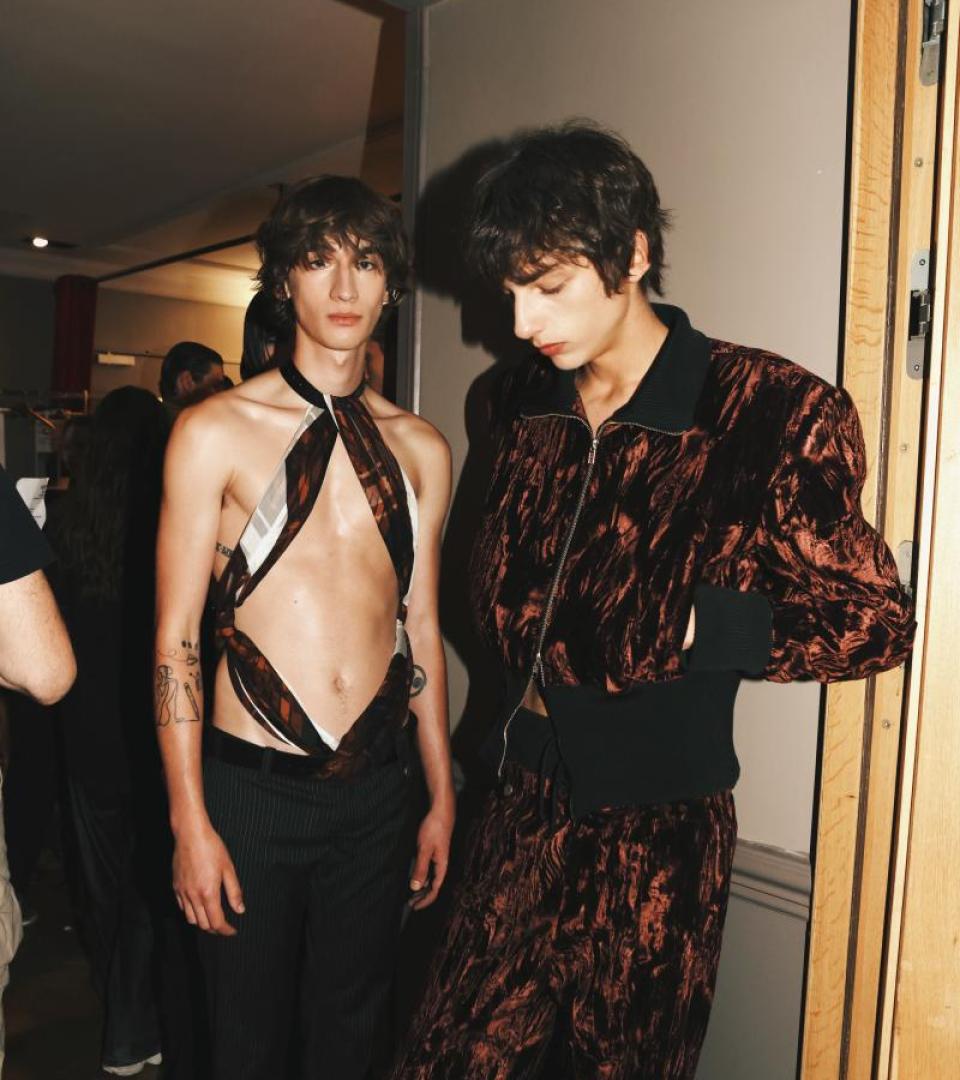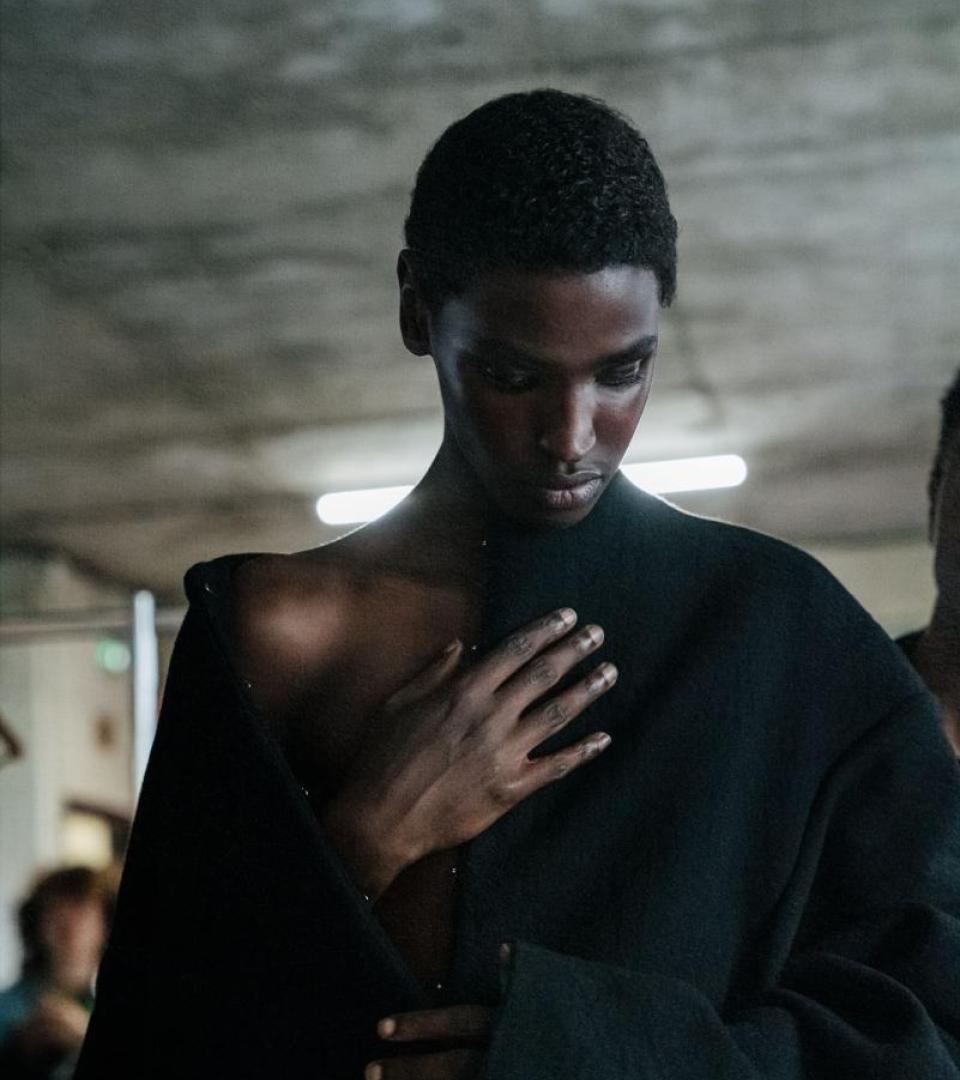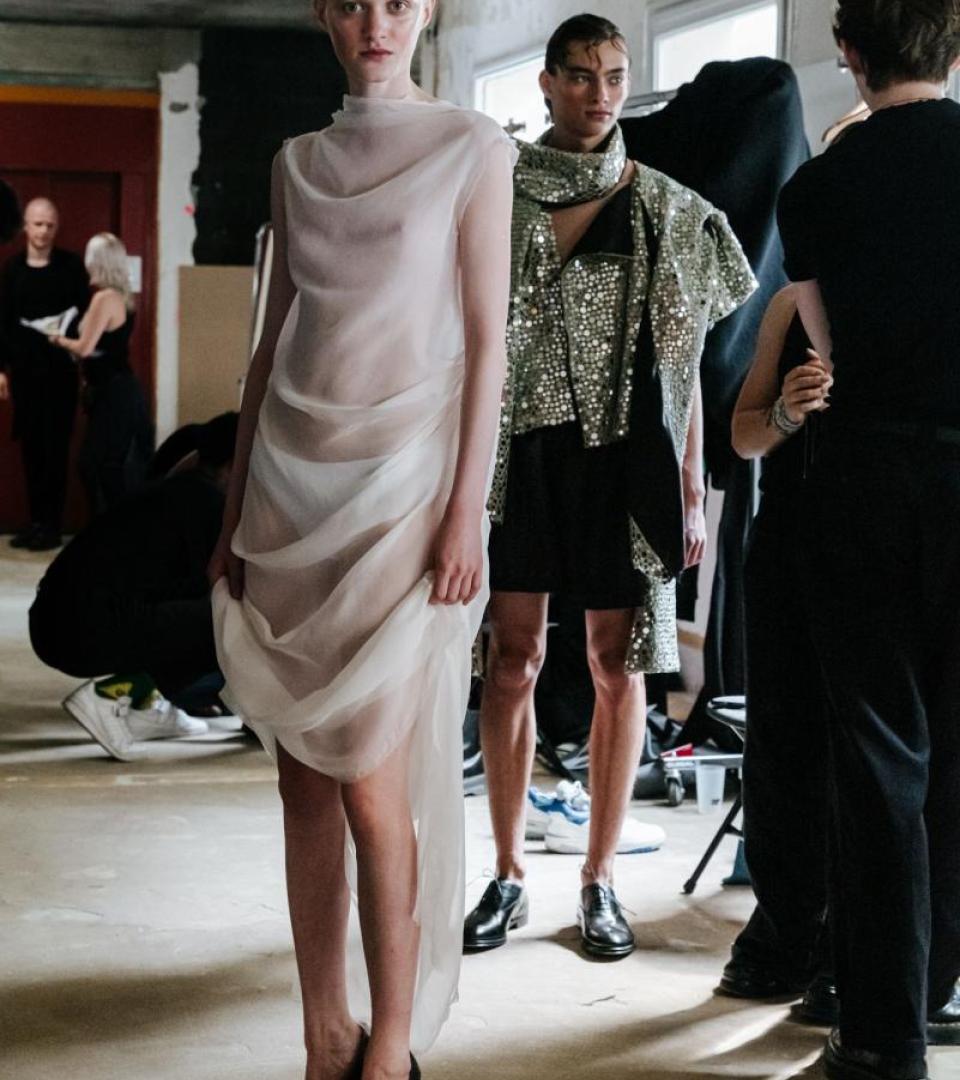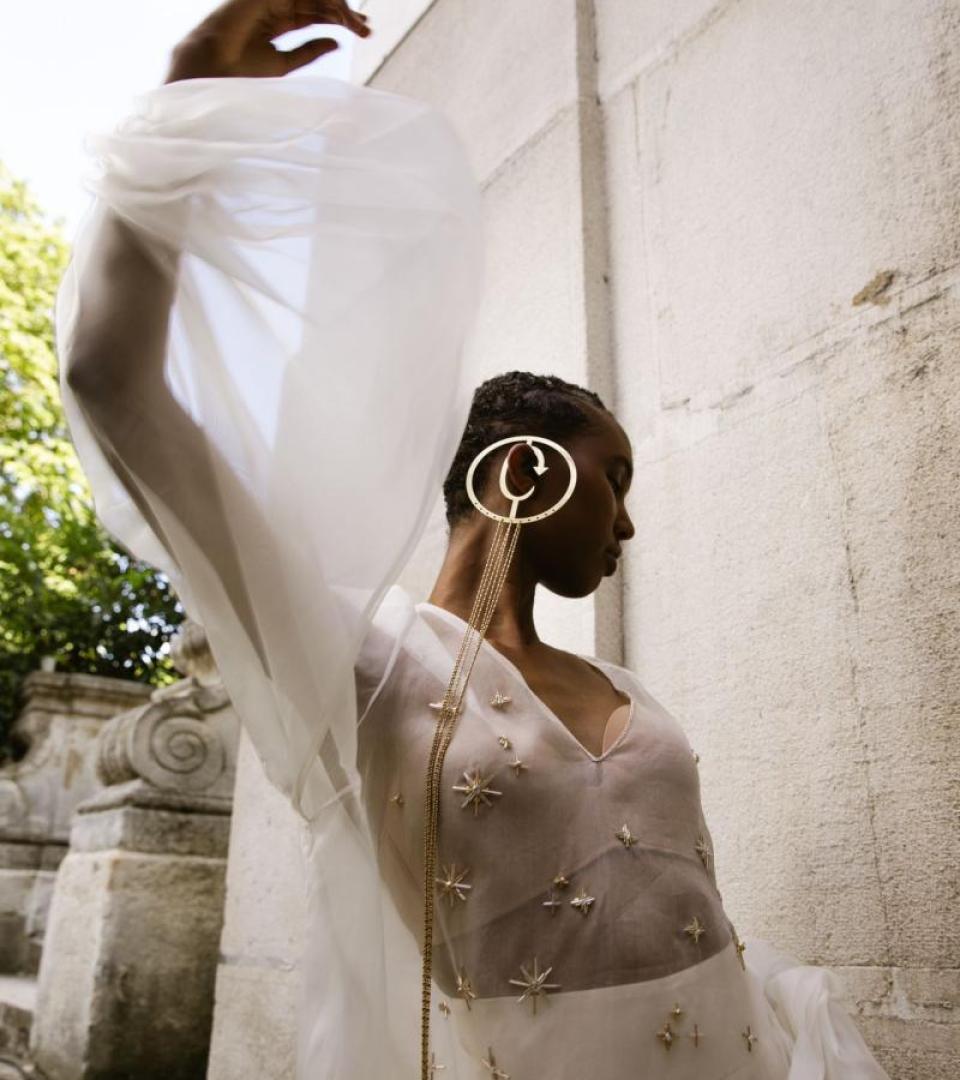Róisín Pierce’s Female Heroines
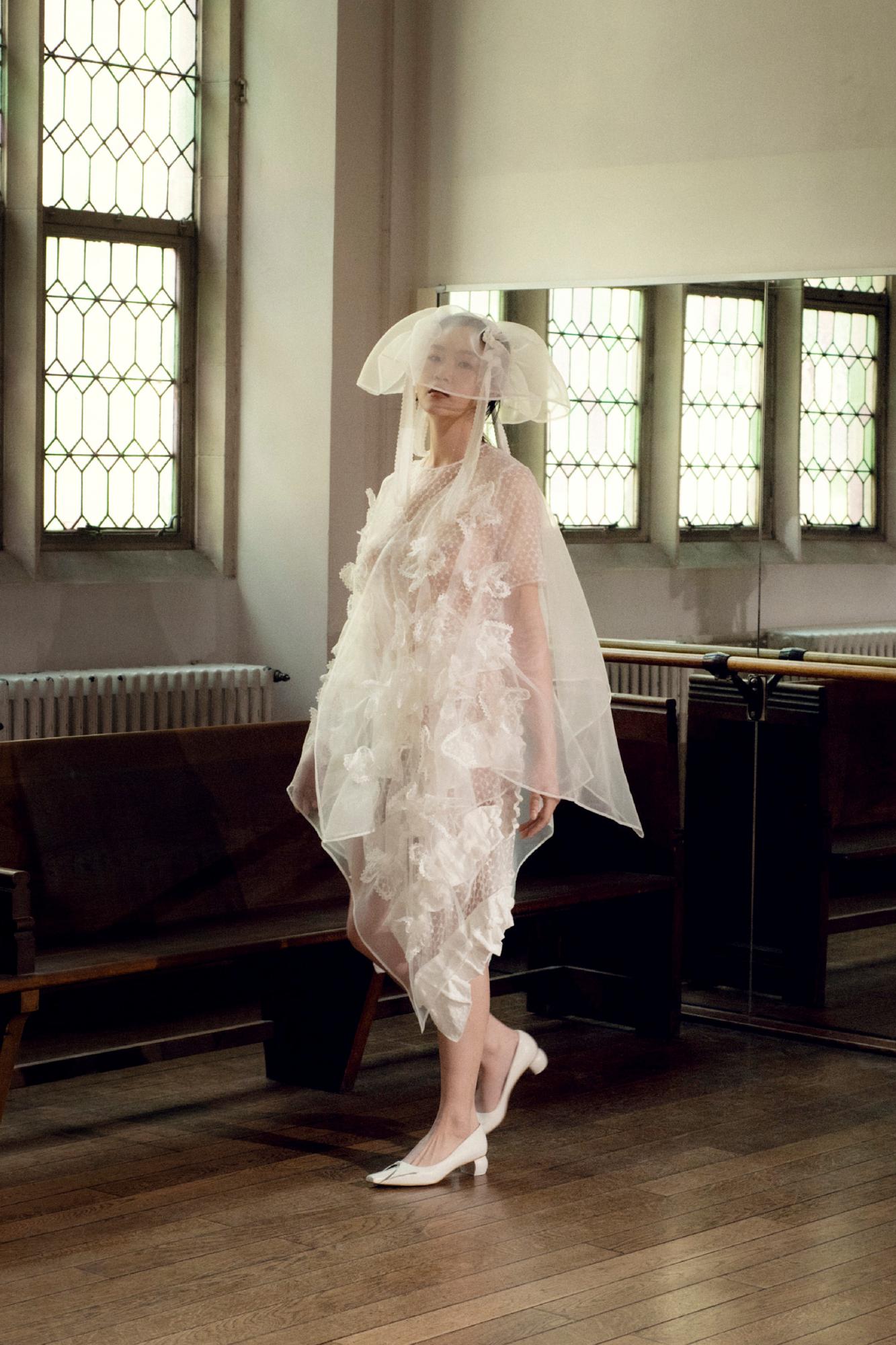
At her debut presentation at the American Church in Paris, Róisín Pierce listed off some of the authors who discussed female sexuality and had their works banned in 20th century Ireland: Sylvia Plath. Kate O’Brien. Edna O’Brien. Also banned: Vogue and Cosmopolitan. Access to information about reproductive health? Non-existent. Her native country’s long, dark history of censorship and suppression of women, particularly by the government and the Catholic Church, formed the basis for her Fall-Winter 2023 collection.
Pierce communicated the weighted tone in hyper-feminine gossamer-light organza dresses that bear her signatures: hand-smocked and crocheted flowers; bespoke floral embroideries reference Irish wildflowers like wild radish flowers and snowberries; deadstock bows; and intricate lacework made in collaboration with three generations of Irish lacemakers, all women, at her Dublin studio. Notwithstanding the fragility of her garments and the pervasively melancholic backstory, Pierce channels strength in sweeping capes perched on top of dainty dresses and patchworked crochet that recalls chainmail.
“[What happened in the past] is like what’s happening in Afghanistan and Iran, and with Roe vs Wade in the United States,” Pierce said at the presentation. “This collection is about the freeing of women and how women will not be controlled.”
What would you like us to know about this collection?
We’re retelling the story of how femininity was challenged in Ireland through craft, and we’re telling the feminist backstory of different crafts [like crocheting and lacemaking]. I started looking at Sylvia Plath’s work because I learned there was a Committee of Evil Literature and you weren’t allowed to access her work or things like Vogue, or authors like Kate O’Brien or Edna O’Brien, who are really significant writers. I was interested in the poem ‘Lady Lazarus’ where [Plath] speaks about being controlled and trying to take over her oppressor. She starts off quite weak and fragile and, by the end of it, has such strength — it’s like a resurrection within her. I wanted the looks, although they are quite soft, to have layers of strength.
How would you describe your evolution as a designer?
From the beginning we have celebrated traditional craftsmanship while experimenting with new construction techniques. We strive to incorporate narratives surrounding the issues that inspire us. We like to pay homage to craft, its complex story and how it relates to women’s role in society both historically and presently.
How intentional are you about evolving creatively? How do you think about this when beginning a new collection?
When you design, your ideas and themes, processes and techniques within the work all evolve, and as a designer you evolve with it. We are all the sum of our own experiences.
What moment, design or collection marked a turning point for you?
I could not mention just one, with each collection we turn a new corner. This is what we are all about.
Evolution and improvement are related. What is one essential improvement the industry could be making?
Some designers are really doing their part to change fashion for the better. I think designers who follow their own ethos and develop their own aesthetic really do a lot for the ecosystem of fashion. I think those designers should be celebrated.
This interview has been lightly edited for clarity.
